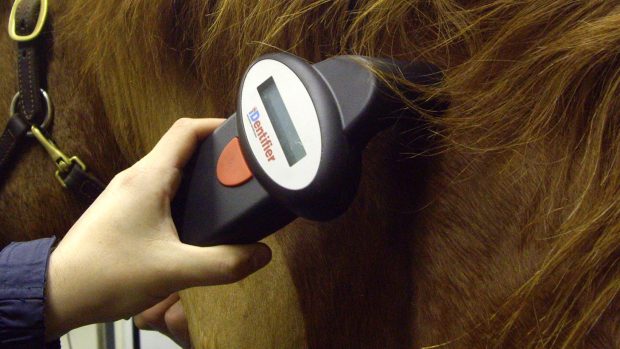OPINION
Among the thousands descending on Yorkshire ahead of the Tour de France grand départ this weekend, 200 were in to a different type of riding.
The young Yorkshire-based Mount St John dressage stud was holding its second open day to showcase this year’s mares and youngstock (pictured above, the stud’s grey Dimaggio competition mare Keystone Diaz with her embryo transfer foal and surrogate dam).
The line-up was impressive; breeders had flown in from Denmark, Germany and Holland, while others had driven down from Scotland or up from the Westcountry.What owner Emma Blundell has built in a short space of time – the business is only three years old – is also impressive.
Her vision was to use the best mares Europe has to offer and, while plenty of people have thought about doing it, Emma actually has the nouse, the drive and the cash to make it happen.
British dressage breeding has come on in leaps and bounds. Although Emma’s mare base is continental and she continues to use European stallions, she and other progressive breeders are producing a new wave of British sport horses capable of holding their own on the international stage.
She’s spent a lot on mare power — sometimes six-figures — but she’s been rewarded with exquisite foals that have attracted international buyers. Having previously sold a few foals abroad, this year representatives for Paul Schockemöhle came calling and have snapped up six colt foals as stallion prospects in partnership with Lone Bøegh Henriksen, owner of the superstar stallion Furstenball.
British team riders Emile Faurie and Michael Eilberg have bought from Emma, and this year World number one Charlotte Dujardin has acquired two colt foals (by Negro and Charmeur). What a boon it would be to have the whole British team riding British-bred horses. It could happen — though they aren’t likely to have British passports.
While what Emma is doing with the stud is exciting, slick and well thought through, it is a bit disheartening that it’s still preferential to register all the foals with foreign studbooks; usually Oldenburg, but this year also KWPN. I see why she does, but I wish there was a British studbook that was attractive enough to breeders that they would seek to register their top class foals with them, even when they are eligible for one of the big-hitting European studbooks.
Britain has five World Breeding Federation (WBFSH) approved studbooks; the Warmblood Breeders Studbook-UK (WBS), Scottish Sports Horse (SSH), Sport Horse Breeding of Great Britain (SHB), the Anglo European Studbook (AES) and the British Hanoverian Horse Society (BHHS).
But until all these British passports afford as many opportunities as, for example, a KWPN passport, where’s the incentive for ambitious breeders using the best dressage bloodlines to register with British-based studbooks?
A (hypothetical) young British-bred colt from European lines with an Oldenburg passport can go to the BEF Futurity youngstock evaluations; he can be assessed (and overstamped) by WBS or another British-based book and licensed to breed. He can also be presented to his studbook of origin for grading. All doors are open to him, so where’s the advantage in giving that horse a British passport that could limit his entitlements?
As it stands, Germany and Holland will be taking credit for any of these British-bred horses registered abroad who compete at the World breeding championships for young horses in Verden. That doesn’t seem right, but there isn’t currently a magic wand. And the inescapable fact remains that buyers currently put a premium on foreign registered foals.
The answer probably lies in somehow persuading at least two of the best British studbooks to amalgamate, improve transparency and communication and, crucially, to start collecting and collating meaningful data on all horses forward for any sort of registration or assessment. And perhaps the BEF’s Futurity scheme could play its part here too.
The Hanoverians have tried a different tack and set up a daughter studbook in the BHHS. However, not all horses are eligible for entry and although BHHS horses and members can take advantage of the parent studbook’s organisation, grading and branding tours and expertise, the BHHS is not a stand-alone British entity.The UK’s current system is too fragmented to gain the momentum and communal power and impact that a larger, single, coherent organisation can.
The paperwork in Britain has not kept pace with the dressage foals now being bred here. Britain is not Germany; we aren’t breeding thousands upon thousands of dressage foals every year, but now that we have the best riders in the world in all three Olympic disciplines and it’d be nice to think there’s a studbook on the horizon capable of consolidating British breeders. It’s a pricey prospect and fraught with difficulty. Is there anyone brave out there with a spare million or two?




